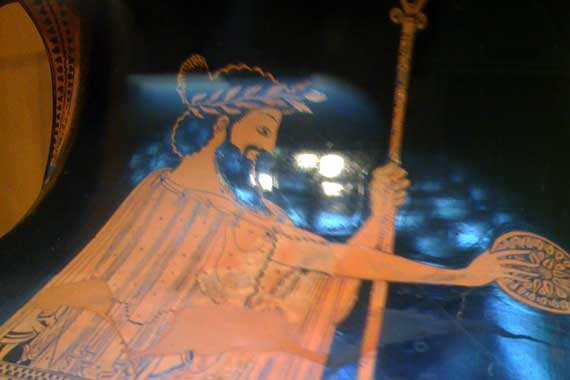
Over at the High on Val’s Day I learned a new word— oinochoe, sometimes spelled oenochoe.
I knew krater (sometimes crater; Greek*: κεράννυμι)—those are the big vase-shaped vessels (sorta) with vertical sides and big open mouths (usually), with paintings on those straight sides (the art museum versions, anyway).
What I hadn’t retained was how kraters were used: they’re the Greek version of wine party-kegs. That’s where the wine was cut with some water, then the liquid was dipped out for the partiers. I guess kraters were probably important and central to the party scene, somewhat like a huge functional floral arrangement….
The oinochoe (Greek*: οινοχόη) was another part of the wine-party ritual and ceramic assemblage. It’s a smaller jug used to transport watered wine from the krater to the partiers. It has a curvier shape than the krater, and the examples I saw also had painted scenes on the shoulders and bulbous sides, and sometimes were decorated near the rims, too.
Anyway, the big take-home message here is that the Greeks (the haves, anyway) were big into the party scene complete with an assemblage of wine vessels, both decorative and functional. The partying was for more than simple pleasure (whoopee!). The various vessels also were placed in burials, so wine-feasts were linked not only to religious rituals but to funerary activities, too…. In a sense, this connection to wine undergirded the ancient Greeks’ sense of self and cultural identity, and they shipped wine to their colonies so they could continue to, well, be Greeks.
A corollary is that in the art museum setting, lovely archaeological artifacts lack their context (there I go again!), and are, for the most part, reduced to being just objects. Pretty, sometimes. Interesting, sometimes. But soulless. Spot-lit for aesthetics and little more….
* Greek translations are from Wikipedia….